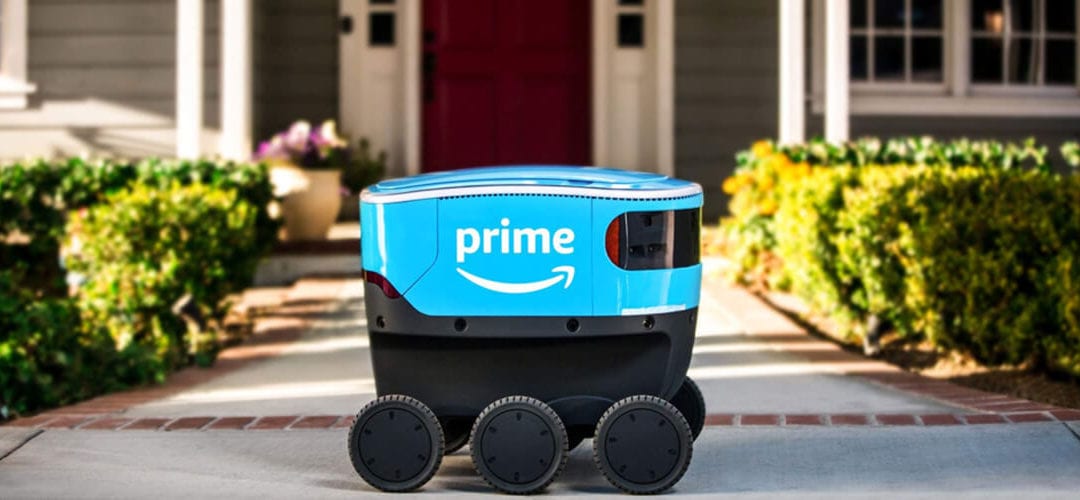As with many industries, the floral industry is not immune to the forces of technology and science. Just as the internet had a profound change on the industry as we knew it 20 years ago, over the next decade, we will see the flower business transform itself once again in many ways.
Five technology forces that will reshape the floral world
As growers perfect the process of ocean shipping, this will allow many countries in the world to start competing on a global level and enter the U.S. market. China and Africa for sure, but there will be a host of smaller countries that would no longer be constrained by air cargo rates, capacity and routes. Retail prices should continue to drop for consumers, which will help grow the market overall for flower consumption.
We have already seen it in play this last Valentine’s Day, with the increase number of cargo ships moving product to North America. Royal FloraHolland did an extensive study years ago that proved that roses shipped from Africa actually last longer (vase-life-wise) after being on the water for three weeks when properly prepped for ocean shipping.
This won’t be limited to traditional shipping containers because companies will start developing high-speed cargo boats that can cruise at 50 knots rather than 10 knots. The market for perishables, not just fresh flowers, will be transformed even further.
While mechanical automation has been limited to bouquet-making machines for the most part, we will start to see rapid adoption of robotic technologies that can reduce labor costs dramatically for mass-market suppliers. The mass market has demonstrated they can dominate the under $15 category, but it has been unable to crack the hand-assembled florist-quality arrangements market yet. This will change very soon as robotic companies are tripping over themselves to develop one-arm robots that can replace AIFD-quality designs at more than 300 units per hour.
The overall global robotic automation sector is projected to grow more than 500 percent in the next decade as robot prices keep dropping each year and as it becomes easier and easier to program by people with no computer skills.
We are already seeing robots make coffee, mix drinks, and make pizzas and pancakes, and they’re rapidly being adopted by many service industries. In many cases, it’s not to save money but because of the lack of workers available for the roles. As long as the consumers get a fresher product for less money with better quality, they really don’t care who made the flower arrangement – a human or a machine. Ironically, most flower bouquets are already made by bouquet-assembly machines, but those are still far too labor intensive to purchase and operate to profoundly change the dynamics of the consumer market worldwide. New robotic automation technologies will render these machines obsolete in the next decade as product development shifts to higher end arrangements.
Smart Vending Machines (or as some people call this, unmanned retail) are starting to pop up everywhere worldwide, and they’re beginning to become accepted by consumers as a convenience at the retail level. While they may end up capturing only a fraction of the total retail sales overall, there is a place for smart machines that can sell flowers 24/7 and deliver via Uber and Lyft.
Consumers just won’t tolerate bankers hours anymore, and 99.9 percent of the retail floral industry goes dark everyday from 6 p.m. to 9 a.m. That just won’t last going forward. Most of these smart vending machines may be owned and operated by growers who throw away up to 40 percent of the weekly crop, having no venue to move their excess product.
You can’t travel to Asia these days without bumping into a flower cooler vending machine at a major airport. Look for these smart floral vending machines to start trickling over to North America over the next several years and capturing a good chunk of retail flowers sales.
The battle to deliver retail goods as fast as possible and at as low a cost as possible per delivery, has now seen the heavyweights jump in. While this trend started with crowd-sourced drivers initially (Uber, Lyft, Deliv, etc.), it will quickly progress into unnamed delivery technologies such as autonomous drones and droids.
Amazon, Walmart, Target, Domino’s Pizza, Kroger and others are investing billions to perfect the technology that will bring you a hot pizza, fresh-baked bread or flowers 24/7 at minimal cost.
While we are not sure if future flower deliveries will be made by droids on the sidewalk or drones in the air, rest assured that this practice and technology is coming much faster than people imagine at a far lower cost than any company truck and company driver can match.
While most people have heard about this but have no idea what it really is or means, the global effects of the Blockchain on the supply chain will be profound over the next decade. Companies worldwide are investing billions to find ways to improve products, customer relationships and supply chains in ways that will transform whole industries.
Just last February, JP Morgan Chase announced its own digital currency (JPM Coin). Even they see the handwriting on the wall after initially ignoring cryptocurrencies for years as a fad.
For a sneak preview of the latest technology in floral, don’t forget to put this year’s International Floriculture Expo (IFE) show, in Miami, in June, on your calendar. It’s well worth the effort to make the trip to Miami as they plan to have a “futurist technology” exhibit to showcase some of the most interesting technology from numerous floral companies around the country.



Alex Frost has founded and operated multiple technology and marketing companies in the floral industry for more than 25 years. He has also developed unique supply chain software for the flower industry. Contact him via email at alex@quickflora.com.







